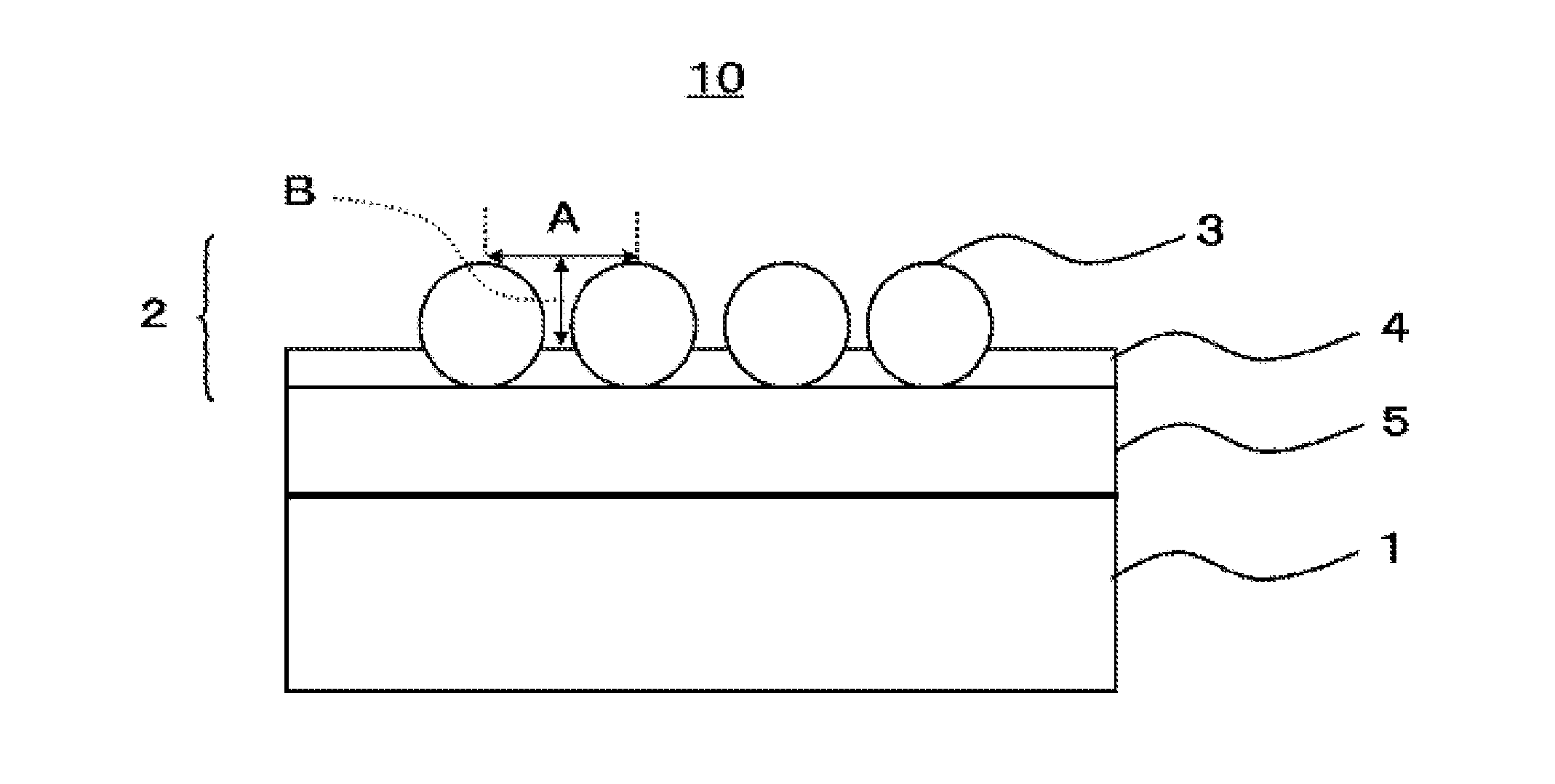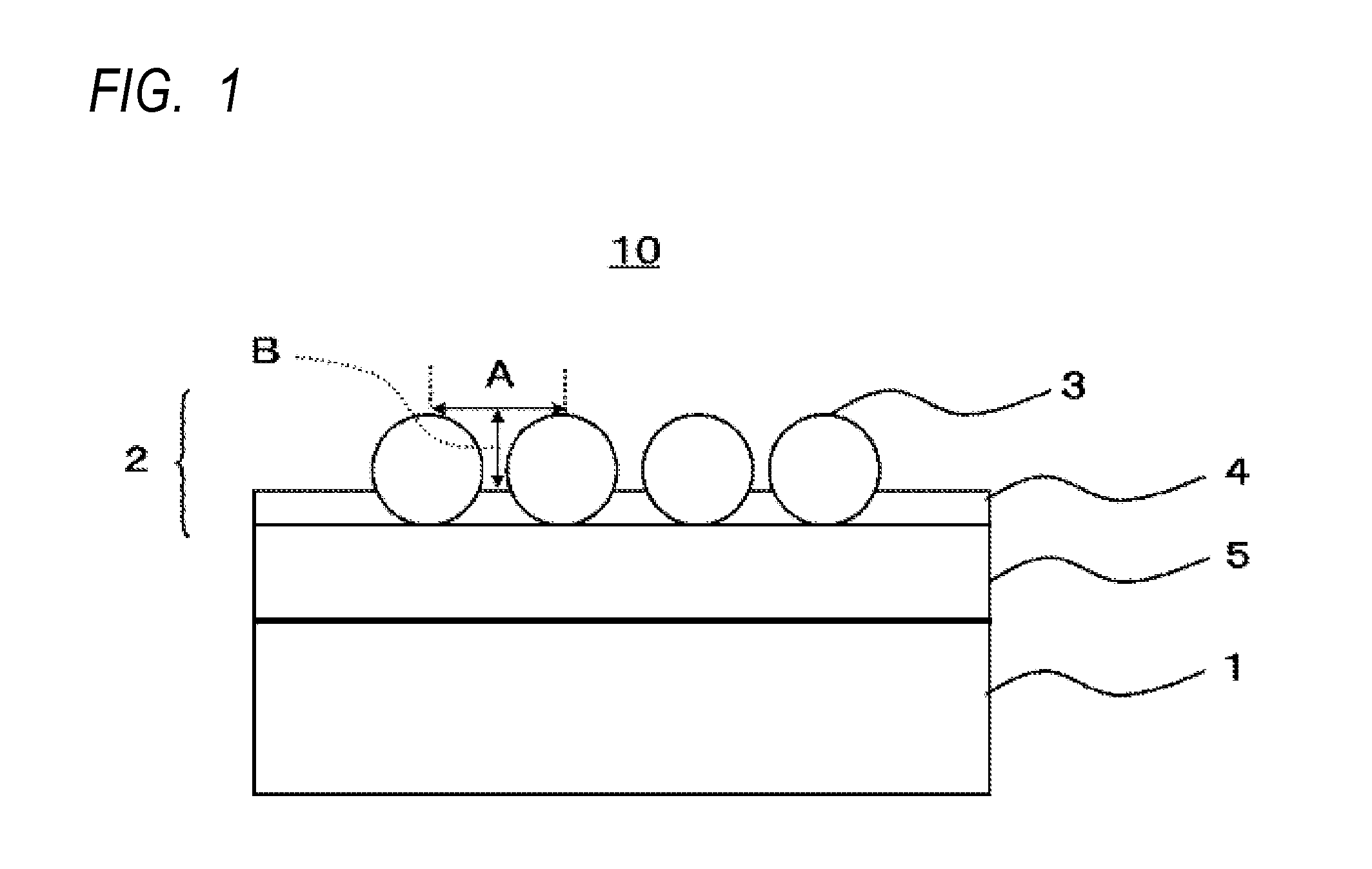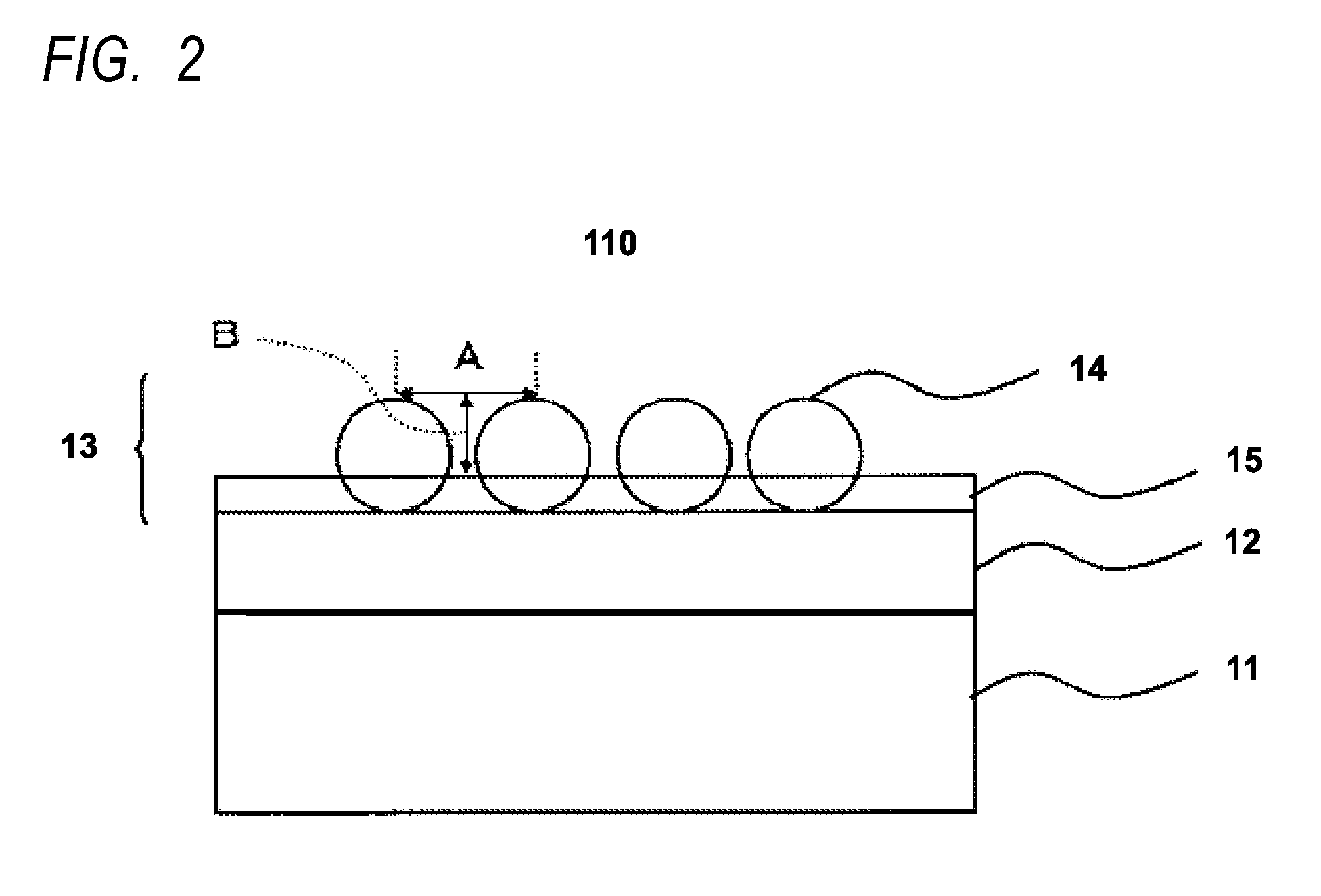Antireflective film, polarizing plate, cover glass, image display device, and method of manufacturing antireflective film
a technology of anti-reflective film and polarizing plate, which is applied in the direction of polarizing elements, instruments, coatings, etc., can solve the problems of insufficient scratch resistance, complex manufacturing process of anti-reflective film, and inability to obtain sufficient hardness, etc., to achieve excellent scratch resistance, low reflectance, and high hardness
- Summary
- Abstract
- Description
- Claims
- Application Information
AI Technical Summary
Benefits of technology
Problems solved by technology
Method used
Image
Examples
example 1
Making of Antireflective Film
[0331]To PET (COSMOSHINE A4100, a product of TOYOBO Co., Ltd.) as a 100 μm-thick substrate, a coating solution of composition for forming antireflective layer A-1 was coated in a wet amount of about 2.8 ml / m2 by a gravure coater, dried at 120° C. for 5 minutes, and then cured by being irradiated with ultraviolet light from an air-cooled metal halide lamp at an irradiation dose of 600 mJ / cm2 as a purge of air with conducting nitrogen so as to achieve an atmosphere with an oxygen concentration lower than 0.1 vol %, thereby preparing an antireflective film A-1. Herein, fine adjustments were made to the wet coating amount and the particle occupancy was measured every time fine adjustment was made. What had the highest particle occupancy was adopted as the antireflective film A-1. An antireflective film A-2 was prepared in the same manner as the antireflective film A-1, except that the substrate was changed from PET to cellulose triacetate film (TG40UL, TAC, ...
example 2
Preparation of Plastic Substrate with Hard Coat Layer
[0358](Preparation of Composition for Forming Hard Coat Layer)
[0359]Into a mixing tank, 10.5 parts by mass of methyl acetate, 10.5 parts by mass of MEK, 22.52 parts by mass of PET, 6.30 parts by mass of urethane monomer (U-4HA) and 0.84 parts by mass of IRUGACURE 184 were charged, stirred and subjected to filtering through a polypropylene filter having a pore diameter of 0.4 μm, thereby preparing a hard coat layer composition B-1 (solid matter concentration of 58 mass %).
[0360]Likewise, a hard coat layer composition B-2 was prepared in the same manner as the hard coat layer composition B-1, except that the proportions of the ingredients were changed so as to make up the composition shown in Table 4. The numerical value pertinent to each ingredient in Table 4 is in parts by mass.
[0361](Preparation of Plastic Substrate with Hard Coat Layer)
[0362]To a cellulose triacetate film (TG40UL, a product of Fujifilm Holdings Corporation), a h...
PUM
 Login to View More
Login to View More Abstract
Description
Claims
Application Information
 Login to View More
Login to View More - R&D
- Intellectual Property
- Life Sciences
- Materials
- Tech Scout
- Unparalleled Data Quality
- Higher Quality Content
- 60% Fewer Hallucinations
Browse by: Latest US Patents, China's latest patents, Technical Efficacy Thesaurus, Application Domain, Technology Topic, Popular Technical Reports.
© 2025 PatSnap. All rights reserved.Legal|Privacy policy|Modern Slavery Act Transparency Statement|Sitemap|About US| Contact US: help@patsnap.com



